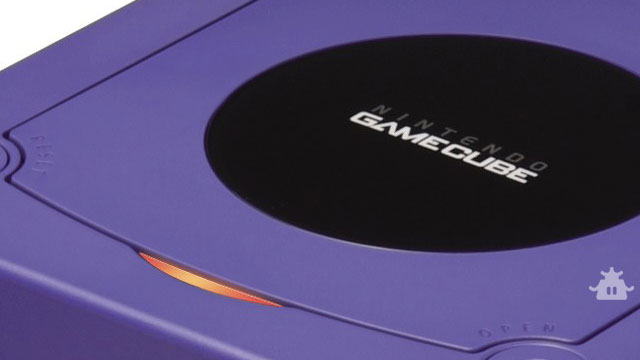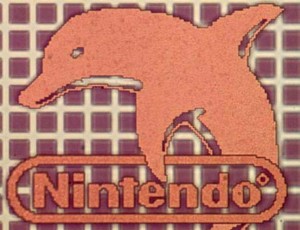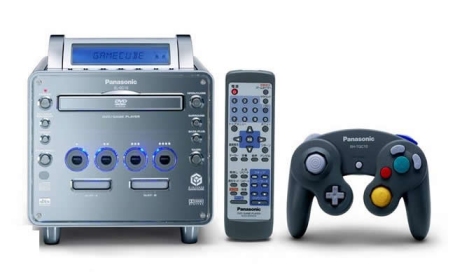
For me, Nintendo’s GameCube was just a little bundle of fun. Not only did it have a huge catalog of great games, but the console itself was just so… well, Nintendo. From its cute, little teeny-weeny optical discs to the strange but ever-so practical carry handle on the back, it was just brilliantly kooky. But it wasn’t just its looks that made it strange and eccentric. Since its release in 2001, a number of fascinating facts, stories, and secrets have surfaced surrounding the console and its development. With this in mind, I thought it fitting to remind ourselves of some of these crazy tales and facts that altogether form part of the wonderful Nintendo folklore.
Alternative Intro Screen
Okay, so this is one of those easter eggs that most GameCube owners at the time would have known. Simply holding down the Z button when powering up the console gave you an alternative start up sound sequence that involved a small child laughing. What you probably didn’t know is that if you hooked up three more controllers and held down the Z button on all of them, this would then produce a further sound sequence, this time with a very distinct Japanese twang to it.
GCN vs. NGC
The common abbreviation for GameCube in the west was GCN (GameCube Nintendo); however, in Japan it was abbreviated to NGC (Nintendo GameCube). Although the Japanese abbreviation makes more practical sense, there was a reason for this. Apparently the abbreviation NGC was already taken for the Neo Geo (Pocket) Colour, the short-lived 16-bit handheld console manufactured by SNK in 1999. As a result, GCN was coined to save confusion which then stuck in the US and Europe.
Project Dolphin
During its development and before it was given its official title, GameCube was known only as Project Dolphin. What’s interesting is that Nintendo references this in a number of ways, both in the console and its games. For example, every GameCube console houses both a microscopic chip with a picture of a dolphin on it and a GPU chip with the name Flipper etched into it, referencing the old ’60s US TV show following the exploits of a friendly dolphin. Further nods can be found in Super Mario Sunshine, which is set on the dolphin-shaped Isle Delfino, and Pikmin, whose character Captain Olimar travels around in the SS Dolphin.

Motion Controller
You may think that the Wii Remote was Nintendo’s first step into the motion controller business, but Nintendo actually produced and patented a motion controller to work with GameCube. This was so far into development that the controller was tested by developer Factor 5 for use on some of its launch titles, namely Star Wars Rogue Squadron II: Rogue Leader. Alas, this was never to be and the controller was shelved at the last minute. All was not lost, however, and similar technology was used later to develop the Wii Remote and Wii, which as I remember didn’t work out too badly for Nintendo.
Stereoscopic 3D
Again, it seems Nintendo was ahead of its time and almost produced a console that would play games in 3D. Technically, GameCube can already display 3D images if it were connected to a compatible 3D LCD screen and was playing the relevant 3D software. Nintendo CEO Satoru Iwata confirmed that all GameCube systems have 3D compatible circuitry and that one of the GCN launch titles, Luigi’s Mansion, had a fully functional 3D version made. However, due to the cost of liquid crystal back in 2001, it simply wasn’t cost effective. Once again, another revolutionary idea was shelved, but again not forgotten, and after ten long years 3DS finally made its appearance.
Background Music
This little easter egg is extra special and would have only been known at the time to anyone who had the mind to think, “I wonder what would happen if I sped the background music up on my GameCube to about 19 times the normal speed?” Well, what you get for your efforts is the old Japanese Famicom Disk System start up music. This system, released only in Japan, was an add-on for the Famicom that used floppy discs instead of the conventional cartridges. Whenever a disk was not inserted and the system was booted up, this tune would play whilst Mario and Luigi battled in the background over the colour scheme of the Nintendo sign. The GameCube developers found this to be a fitting ambient background tune when slowed down, which is a testament to us all that recycling can be good!
Panasonic Q
When GameCube was released, it was competing at the time with the likes of the PlayStation 2 and Xbox, both of which were able to play DVD discs. The lack of DVD support for GameCube was a regular source of criticism, and as a result Nintendo licensed its gaming technology to Panasonic to make a hybrid version of the GCN. The Panasonic Q was released in December 2001 in Japan only and featured DVD support via a front loading disc tray, a backlit LCD display, support for Dolby Digital 5.1, a subwoofer jack, a sleek stainless steel casing, and possibly one of the rarest GameCube controllers ever, featuring the Panasonic logo instead of Nintendo’s. Unfortunately, the system was discontinued two years later due to poor sales. Given that the price tag was around $439, this was hardly a surprise. Still, they seem to have been a good investment as sales of the console on eBay in good condition regularly go for over $500.

No Mario?!?
You may think that Nintendo was committing gaming suicide by releasing a brand new console without Mario as a main protagonist in any of its launch titles. This, however, was a particular masterstroke by Nintendo, deciding instead to launch with a Mario series title but this time featuring his brother, Luigi, as the main character. Luigi’s Mansion was only the second game ever to feature Luigi as the only playable character (the educational game Mario Is Missing for PC, SNES, and NES being the first), and the developers decided that having Luigi as the main character would keep the game original and new, perfect for a new console release. Luigi’s Mansion was well received and became the most successful GameCube launch title and one of the bestselling games of 2001.
When Is a Cube not a Cube?
Well… when it’s a GameCube, by the look of it. To my absolute mathematical horror, it seems that the GCN is not a cube after all. By definition, a cube is a box-shaped solid object that has six identical square faces. Measuring 4.25” by 5.875” by 6.25”, GameCube goes against everything that makes a cube. Had I known this sooner I’d have written a letter of complaint for false advertising, but being as I’m fourteen years late I shall let you have this one, Nintendo, you rascals!
So there you go, a small collection of GameCube’s finest little tidbits. You can now get your geek on and immediately run and tell everyone you know who haven’t read this article already, smiling smugly whilst doing so, safe in the knowledge that you are a far superior human being.




 ShareThis
ShareThis






